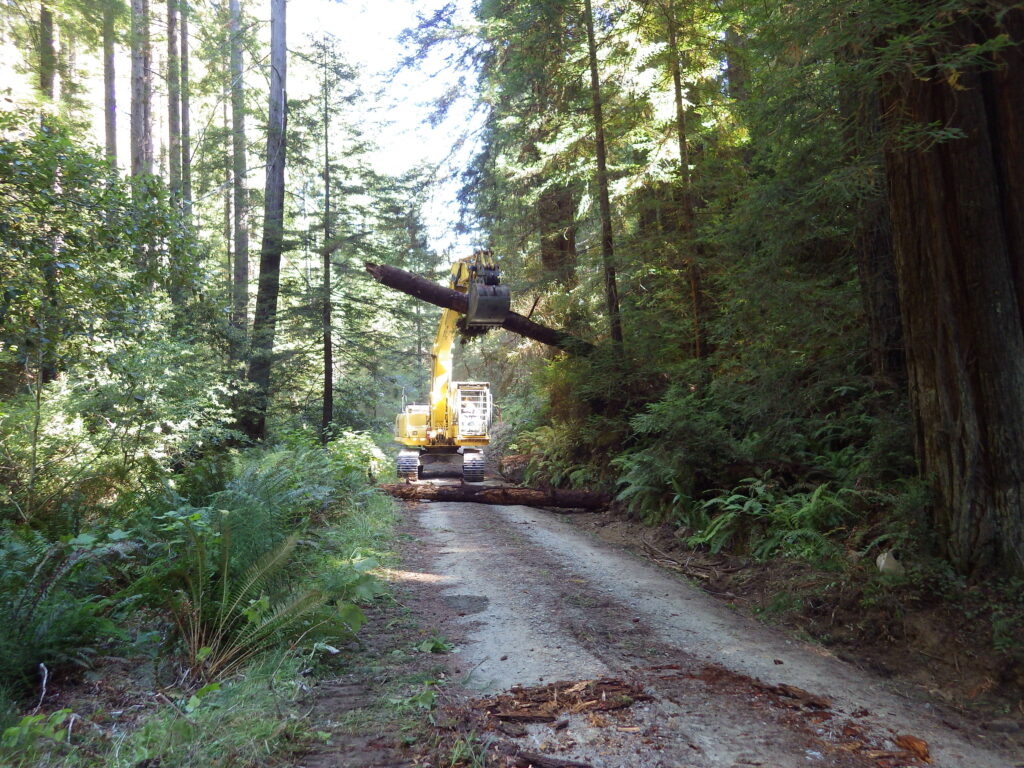News
Hare Creek and Bunker Gulch Stream Restoration
August 28, 2019

 Update: September 11, 2020
Update: September 11, 2020
This project is now complete! Huge thanks to all of the organizations and individuals who helped bring it to completion. Many future generations of fish and other aquatic and amphibious life salute you.
August 28, 2019
We’re at it again this summer with our ongoing stream habitat restoration projects to benefit coho salmon, funded by two grants from California Department of Fish and Wildlife’s Fisheries Restoration Grant Program.
The coho salmon is an endangered species. Where a single stream was once home to tens of thousands of individuals, now only one or two hundred rugged coho currently return to spawn each year. Mendocino Land Trust is working alongside many other organizations to reverse historic human practices in an effort to restore coho salmon to sustainable numbers.
By removing logging roads and restoring these areas to natural conditions, we reduce the amount of sediment entering the creek. This improves the chance that fertilized salmon eggs will produce live fish, since fine sediment from roads and other sources smothers the gravel needed for spawning and young coho survival. This road removal process is called road decommissioning.
The road shown in the top photo is in Jackson Demonstration State Forest and was right next to the banks of Bunker Gulch. This road is now gone and the stream bank is reconnected to the hillside.
In conjunction with the road decommissioning, we are partnering with the California Conservation Corps to restore salmon habitat at Hare Creek and Bunker Gulch by installing large logs with massive roots in the stream. These large logs will create deeper pools and slower flows for adult fish to rest on their epic journey, while at the same time providing cover for young fish to avoid predators.

A team of highly skilled large equipment operators and several California Conservation Corps crews have been on site for many weeks and are nearing completion. It is exciting to see these large tractors at work in the otherwise peaceful forest. At first, it’s a bit odd, as this is an environmental restoration project after all, and all that tractor work seems out of place. But if you watch for a while, you can see how the crews gradually shape a glen that begins to look like it once was before the logging road was there. The flat road bed is rounded off with graders, and sloped back to the way it was before, a stream bank, as shown above.

The crews cover newly graded stream banks with lots of branches and other plant material so that the soil will remain in place when the rain returns. The tractors also dig out all the culverts that were placed under the road for the side streams that flow into Hare Creek, and re-create the original gullies, through which the waters will naturally flow, once again.

Finally, as we’ve done for many years at different locations, we’re installing large pieces of trees in the streambeds at Hare Creek and Bunker Gulch. Here again the large tractors cable-pull huge fallen trees off the hillsides, pick them up like toothpicks and swing them around (see top photo) before gently placing them into the stream banks to create deep pools in the water.